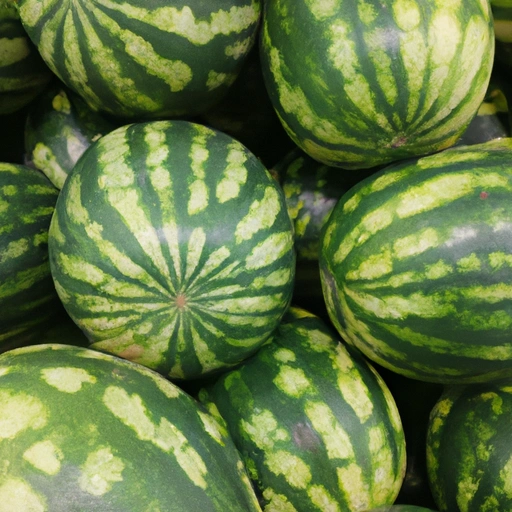Watermelon
Description

Watermelon is a sweet, hydrating fruit known for its high water content and refreshing taste. It's a summer staple that's popular in various cuisines for its versatility and the splash of color it adds to dishes. Watermelons are typically round, oblong, or spherical in shape, with a hard green rind, sometimes variegated with stripes. Inside, the flesh is commonly red, although there are varieties with orange, yellow, or white pulp, often dotted with black, brown, or white seeds. Seedless varieties are also available.
Common uses
Commonly consumed fresh, watermelon is often served in slices, cubes, or as juice. It is also used in salads, desserts, and as a garnish. In some cultures, the rind is pickled or stir-fried, and the seeds are roasted and eaten as a snack.
Nutritional value
Calories
Watermelon is low in calories, providing approximately 30 calories per 100 grams, or about 85-90 calories in a one cup serving (150 grams / 5.3 ounces).
Protein
The fruit contains a modest 0.6 grams of protein per 100 grams.
Fat
Watermelon is virtually fat-free, with less than 0.2 grams of fat per 100 grams.
Carbohydrates
It has around 7.5 grams of carbohydrates per 100 grams, mostly from natural sugars and dietary fiber.
Vitamins
Watermelon is an excellent source of Vitamin C and also provides Vitamin A, particularly in the form of beta-carotene.
Minerals
It contains essential minerals such as potassium and magnesium in modest amounts.
Health benefits
Watermelon is hydrating and may aid in hydration due to its high water content. It's also known for its antioxidant properties, particularly lycopene, which may help reduce oxidative stress. The fruit's vitamins and minerals can contribute to a healthy immune system, skin health, and may have anti-inflammatory effects.
Potential risks
While watermelon is generally safe for consumption, overeating can lead to digestive issues due to its high water and fiber content. Additionally, those with fructose intolerance should consume it in moderation.
Common recipes
Watermelon is used in a variety of recipes, including fruit salads, smoothies, sorbets, and cocktails. It can also be used in savory dishes such as watermelon-feta salads, grilled watermelon steaks, and watermelon salsas.
Cooking methods
Typically consumed raw, watermelon can also be grilled or seared in some recipes for a unique flavor profile.
Pairing with other ingredients
It pairs well with salty and tangy flavors like feta cheese, balsamic vinegar, and mint. Watermelon also complements seafood and grilled meats.
Summary
Watermelon is a versatile and nutritious ingredient that adds a refreshing element to a wide range of dishes. Its historical roots in Africa and its spread across the globe underscore its universal appeal. Low in calories and rich in vitamins and minerals, watermelon can be a delicious part of a healthy diet. Its culinary uses extend beyond simple fresh preparations, fitting in with numerous regional cuisines and dietary preferences.